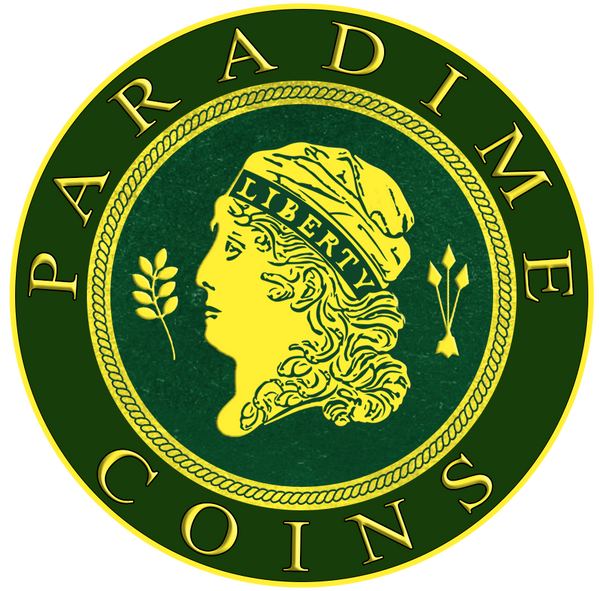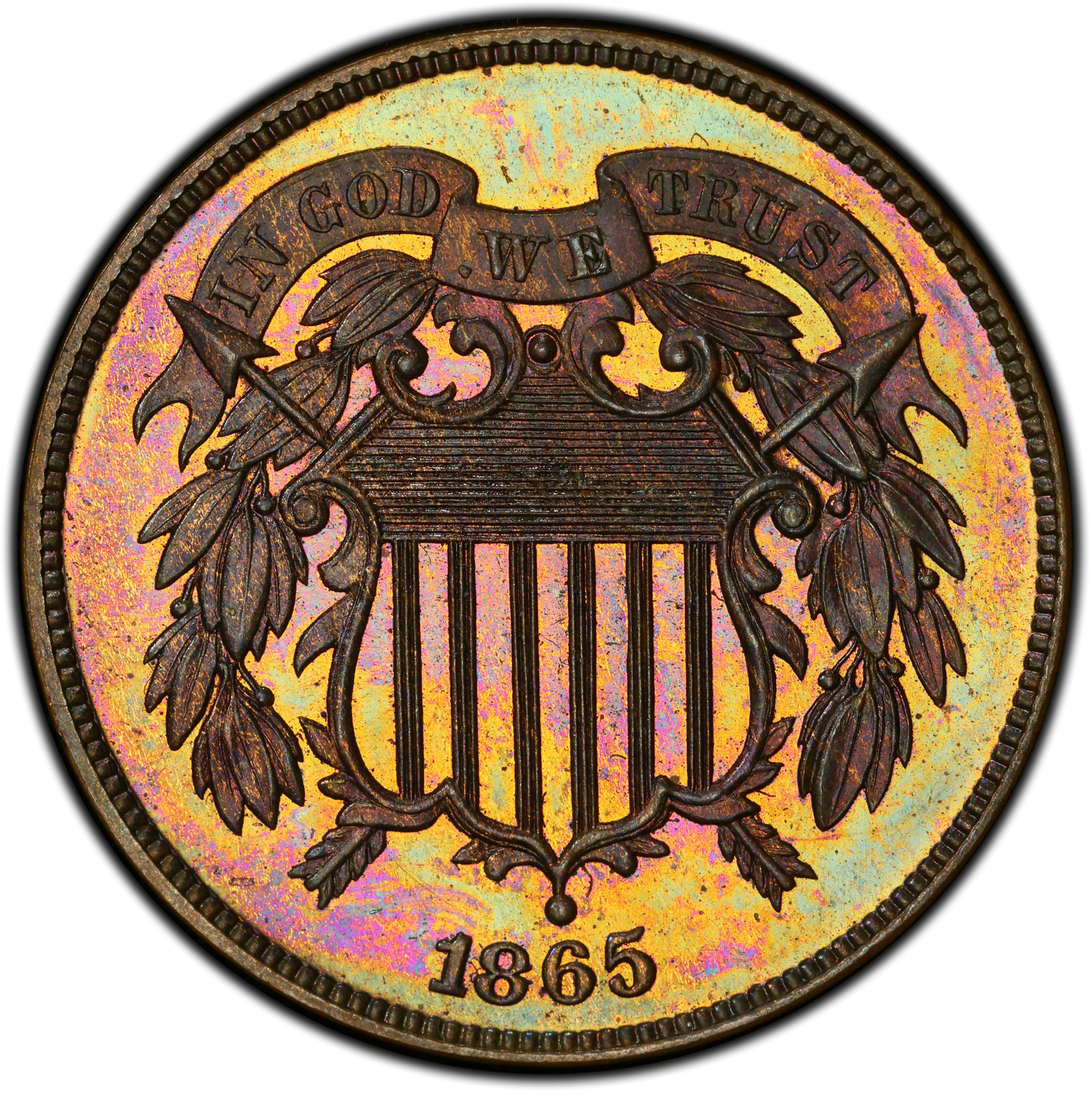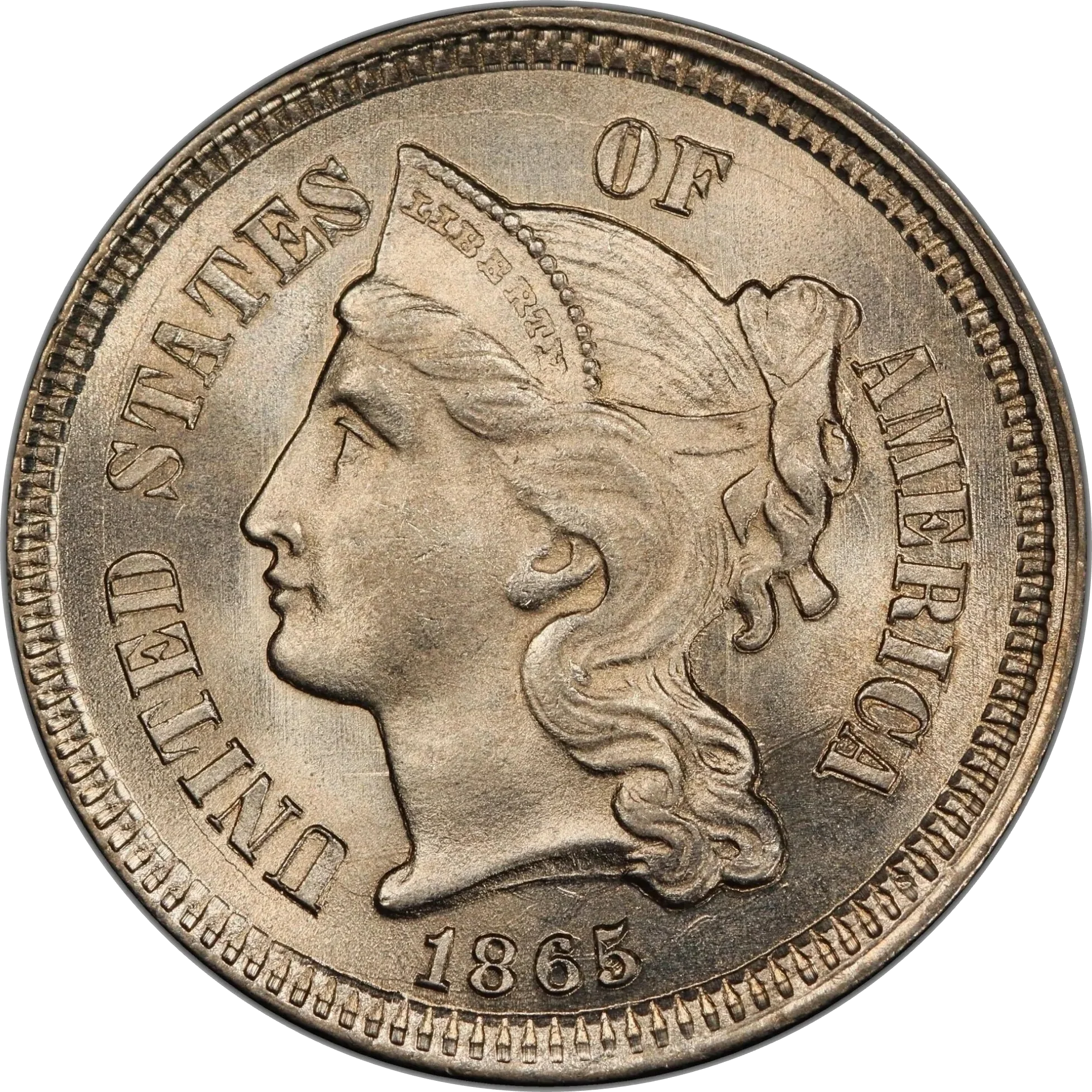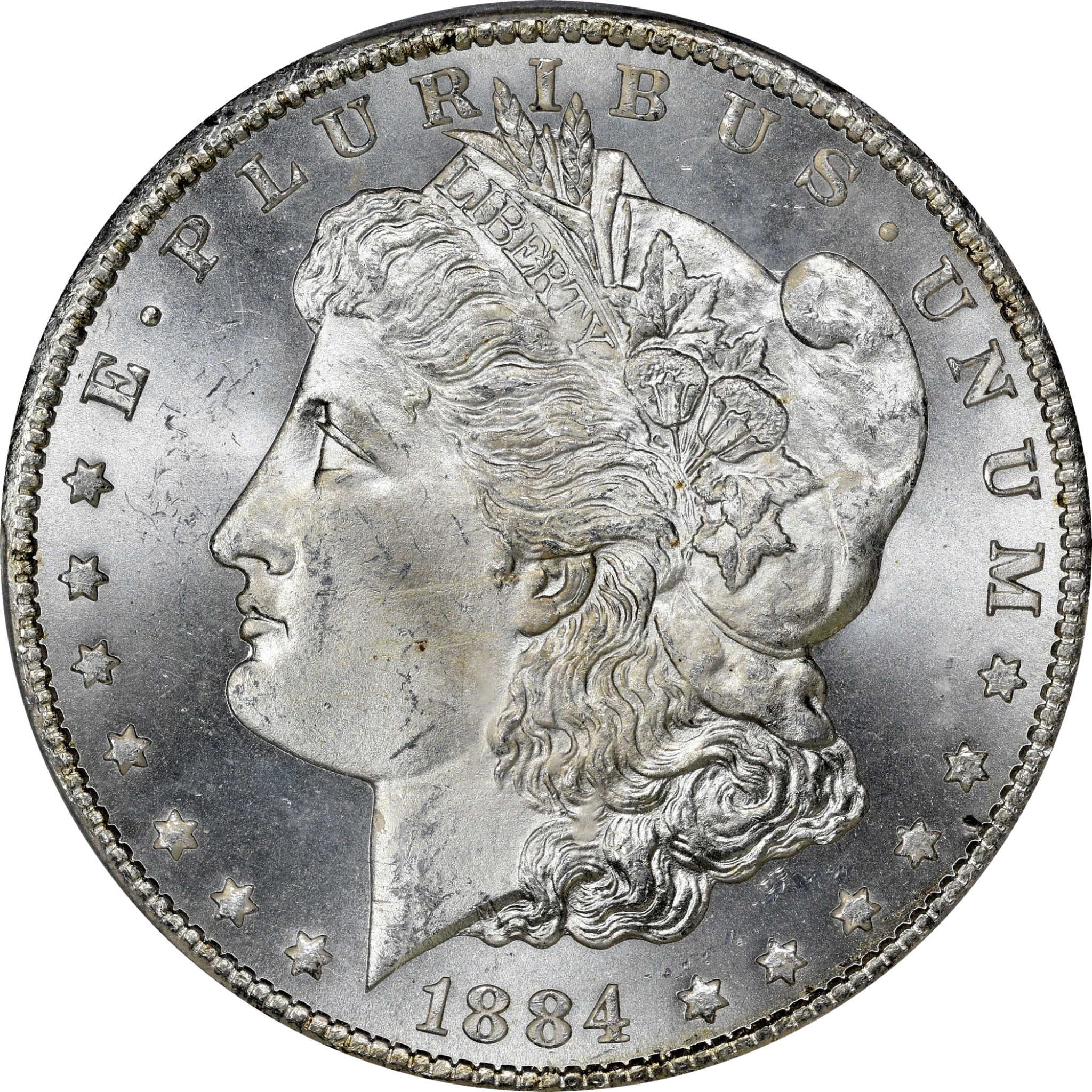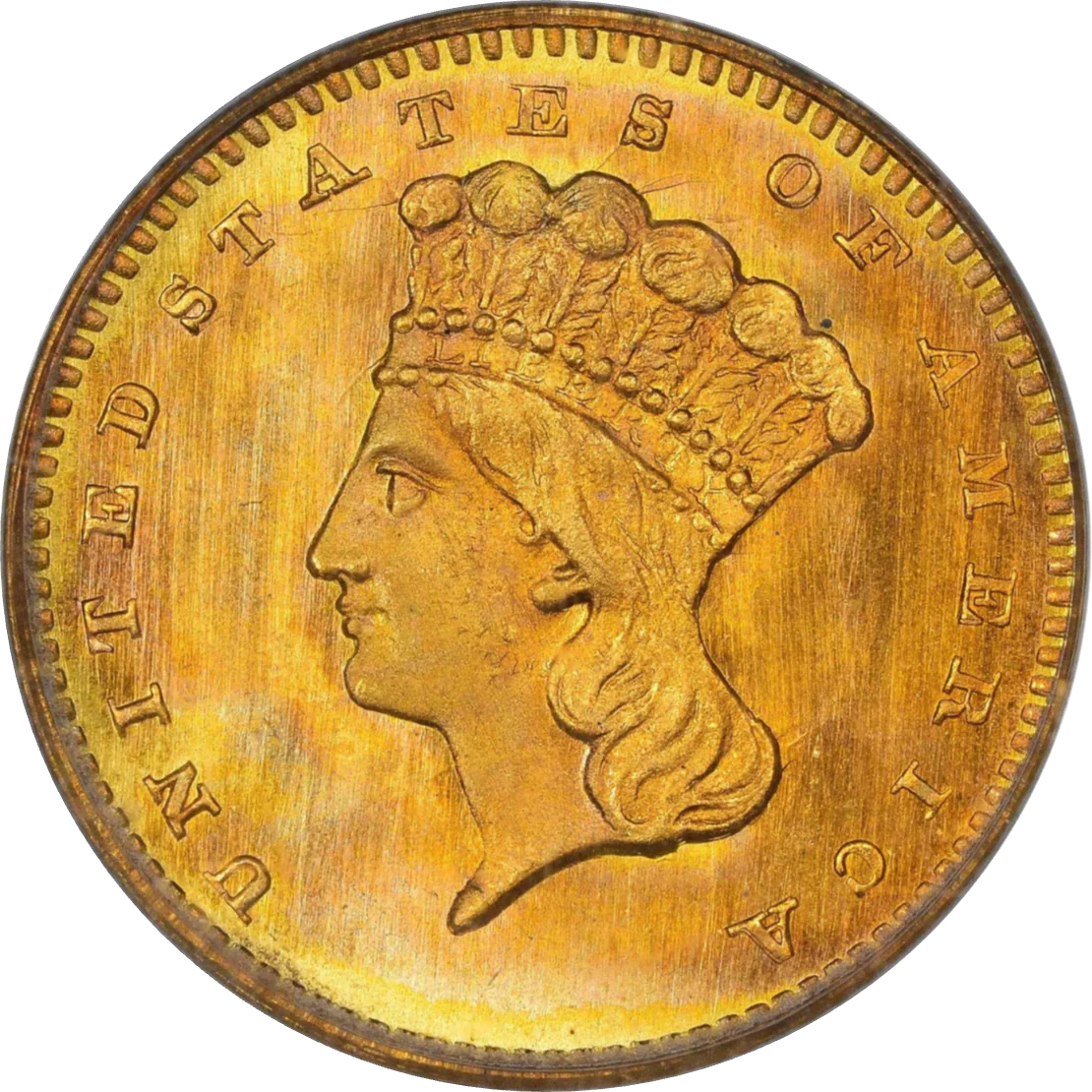Collection: Type 2, Three Outlines To Star
No products found
View All Inventory
Designed by: James Barton Longacre
Issue Dates: 1854-1858
Composition: 90% silver, 10% copper
Diameter: 14 mm
Weight: 0.75 grams (11.57 grains)
Edge: Plain
Business Strike Mintage: 4,914,000
Proof Mintage: Fewer than 300
In 1854, the design of the silver three-cent piece underwent a notable modification intended to improve strike quality. ... Read More
Designed by: James Barton Longacre
Issue Dates: 1854-1858
Composition: 90% silver, 10% copper
Diameter: 14 mm
Weight: 0.75 grams (11.57 grains)
Edge: Plain
Business Strike Mintage: 4,914,000
Proof Mintage: Fewer than 300
In 1854, the design of the silver three-cent piece underwent a notable modification intended to improve strike quality. The obverse was altered by adding three outlines to the central star, and the reverse was updated with an olive branch above and a bundle of arrows below the Roman numeral III. Additionally, the coin’s composition reverted to the standard alloy of 90% silver and 10% copper, consistent with other silver denominations.
Ironically, these changes did not achieve their intended effect. In fact, coins of the 1854–1858 period are considered the most poorly struck of the entire silver three-cent series. Weakness is nearly always evident at the borders and central devices, with many coins exhibiting flat lettering and indistinct detail. The 1856, 1857, and 1858 issues are especially prone to softness, while 1854 and 1855 are only marginally better, with 1855 occasionally seen with a relatively sharper strike.
Despite substantial mintages during this period, few coins were preserved in high grades. Uncirculated examples are rare, and Superb Uncirculated coins are truly elusive. Sharp-strike pieces are the exception, not the rule. Collectors must manage expectations when assembling a set—most business strikes will show varying degrees of strike weakness, and examples with strong detail, especially around the peripheries, are seldom encountered.
Proofs were struck from 1854 through 1858, though in extremely limited quantities. Only 210 Proof sets were produced in 1858, and fewer than two dozen Proofs are known for each earlier date. For collectors assembling high-grade type or date sets, obtaining a Mint State or Proof example from this period can be a significant challenge.
Interestingly, while the 1855 is typically cited as the rarest issue, careful market analysis suggests that the 1856 in Choice Uncirculated is even more elusive—despite its higher mintage. As such, the 1856 may be considered a “sleeper” in the series, representing a true rarity for advanced specialists in U.S. 19th-century silver coinage.
... Read Less